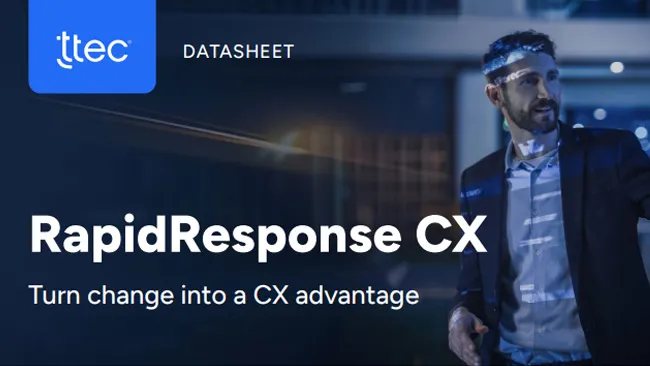Digital assets—tokens or any kind of data stored on a blockchain, such as images, audio, videos, and other files—are everywhere. NYC’s mayor Eric Adams converted his paycheck to Bitcoin and Ethereum, Nike invested in NFT sneakers for the Metaverse, and El Salvador planned to be the first country to adopt crypto as a national currency.
Users are ready and eager to adapt. But is the CX space prepared?
What are we doing wrong?
The market has already seen challenges, particularly in the financial services space where customers are investing large amounts of wealth, time, and energy into cryptocurrencies. Customers choosing to explore new avenues and sources of wealth crave fast, personal, and secure services.
The problem is a lack of all three attributes in this digital-first space. Platforms that specialize in digital assets are looking toward the future, but they aren’t addressing today’s customer needs that come with exploring new frontier, or how to manage customer and employee stress, inexperience, and eagerness that comes with uncharted territories.
We will address three key areas of concerns for digital assets in the financial services space and how CX leaders today can take a proactive approach.
1. Little to no banking in customer education
Digital currency and investments have seen a rise in popularity from news breaking events such as the Dogecoin explosion in value or the artist Grimes selling millions worth of NFTs. But adoption is still new for investors.
According to Pew Research 86% of Americans said they have heard a little about crypto currencies, but only 16% said they personally have invested in, traded, or used one. For all the exposure digital assets have acquired there is still an overwhelming majority of users who are new to the playing field.
Educational resources must be easily accessible externally for customers and internally for customer service associates. If knowledge bases are inadequate or not readily available, brands risk alienating customers who may resort to risky storage options outside of platforms (think USB sticks) or visiting outside forums like Reddit and Twitter where there is an increased likelihood for scams or misleading information.
Educating customers about investments, trading, self-custody of assets, transformers, and the digital assets space in general is crucial to increasing brand loyalty, customer welfare, and future use.
CX solution:
Associates cannot help customers effectively if there are static systems and disperate sources of information. An innovative knowledgebase needs to capture all the data within your organization to be readily available to associates. A single source of truth, powered by content curation, can equip your customer service organization with highly relevant and up-to-date information. That’s why it is critical to empower associates by automating their knowledge systems.
An automated knowledge systems break down silos and eliminate hierarchical roadblocks to spread information more efficiently with a blend of innovative technology, socially infused processes, and collaborative practices. This empowers assocites by giving them easy access to the information they need to do their job well.
A successful knowledge base for digital asset platforms will let your associates hit the ground running with incredibly accurate information when customers need help.
2. Lack of channel support
Fintech’s often believe that digital-first means a lack of voice. This is not always the case. Customers prefer highly skilled human support for stressful situations that require empathy and urgency. Limiting your customer support to a single automated channel or static FAQs can be a red flag for users who need help immediately.
Customers want to be met where they want, when they want. Businesses need to understand that all channels are not built the same, and when a user’s account is hacked a two-hour wait for email versus a two-minute wait for text can mean all the difference.
CX solution:
Conversational messaging is key for successful omnichannel engagement with digital assets. The non-reversable and sometimes volatile nature of tokens like cryptocurrencies requires a seamless and consistent point of communication for customers.
Human associates that can be reached asynchronously via messaging can also help provide emotionally powerful support when it is needed most while a crisis is being escalated.
But note, while implementing messaging is a sign of good-will it needs to be done purposely and strategically. Technology thrown in for technology’s sake will simply harm a customer service interaction. Instead lead with customer experience strategy and design.
To quote TTEC’s Paul Ignasinski when he debunked messaging myths, “Don’t be so quick to offer a tool to your customers that is not in good hands. Customers use messaging apps because they are easy and familiar to use, so don’t risk your brand’s reputation with a rushed product solution that hasn’t been designed to meet specific customer needs.”
Ask yourself, regardless of the severity of issue, will customers dealing with impactful digital transactions want support now or later? A negative customer experience can severely damage your brand perception and increase customer attrition.
3. Cybersecurity risks
Cybersecurity is a tremendous concern in the digital asset space. The Chainalysis 2022 Crypto Crime Report, stated that cryptocurrency-related crime rose to $14 billion in 2021, up from $8.7 billion in 2020. Fraudulent activity and phishing accounts are constant threats that can harm your customers’ well-being and your brand reputation.
Customers that choose your financial platform to invest in digital assets place faith in your brand security. They expect safeguards in place to prevent the worst from happening and readiness if it does.
CX solution:
Proactively prevent fraud and keep data secured 24/7 by deploying the best of human and technology capabilities. A tacitful approach to fraud prevention involves authentication platforms, AI and machine learning, and trust device identification techniques all working in tandem with human decision-making.
These associates superpowered with resources to identify and act in real-time can help ensure customer safety and cultivate trust with these simple actions:
- Prioritize: Automated tools flag risky transactions and interactions based on recency, cost, impact, etc.
- Analyze: Complex processes assess critical data elements and uncover patterns that signal fraudulent or offensive behavior.
- Investigate: Trained experts scrutinize anomalies and define required actions.
- Resolve: Teams take necessary actions to resolve the issue, and machine learning allows automated systems to identify future occurrences.
Prevention will always be key in the security space, especially in a developing field like digital assets, but acting fast and precisely can help minimize customer damage and ensure future trust.
Make humanity + technology your biggest asset
In the financial services space, improving customer experiences has always relied on brand reputation. Users want to trust the brands they do business with and ensure they have a healthy future together.
Brands need to bolster their reputation in an increasingly digital future by acting on communication, accountability, and proactiveness to show customers they care and are ready to guide their growth.













